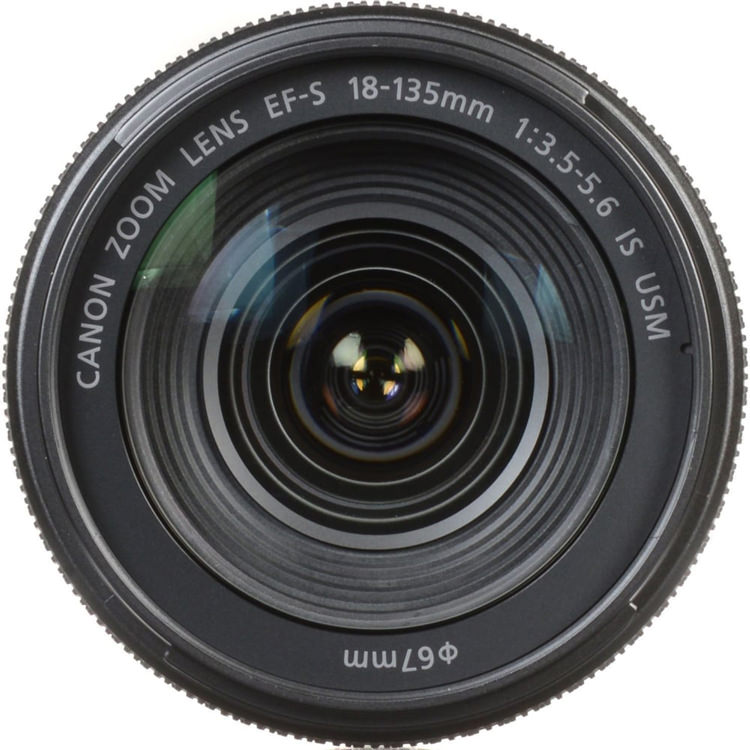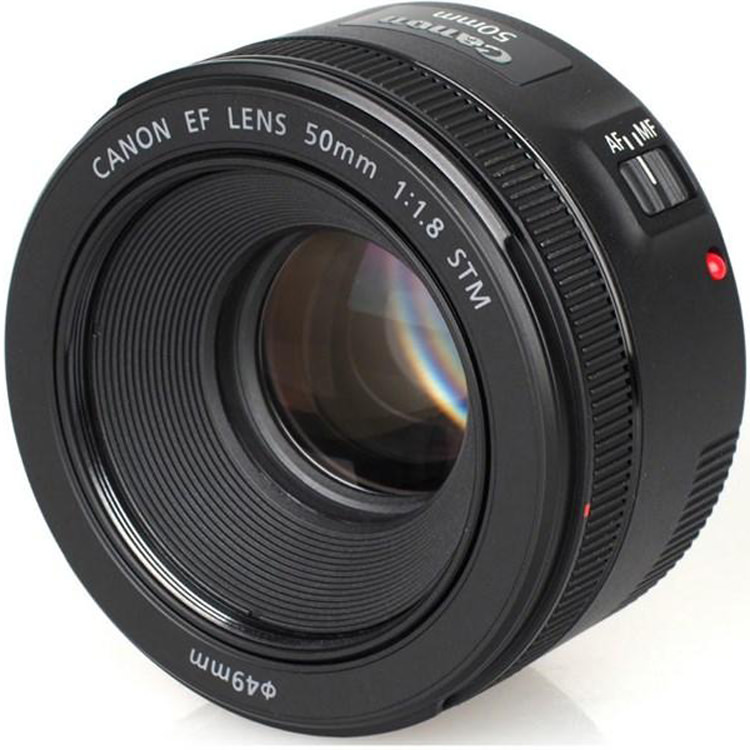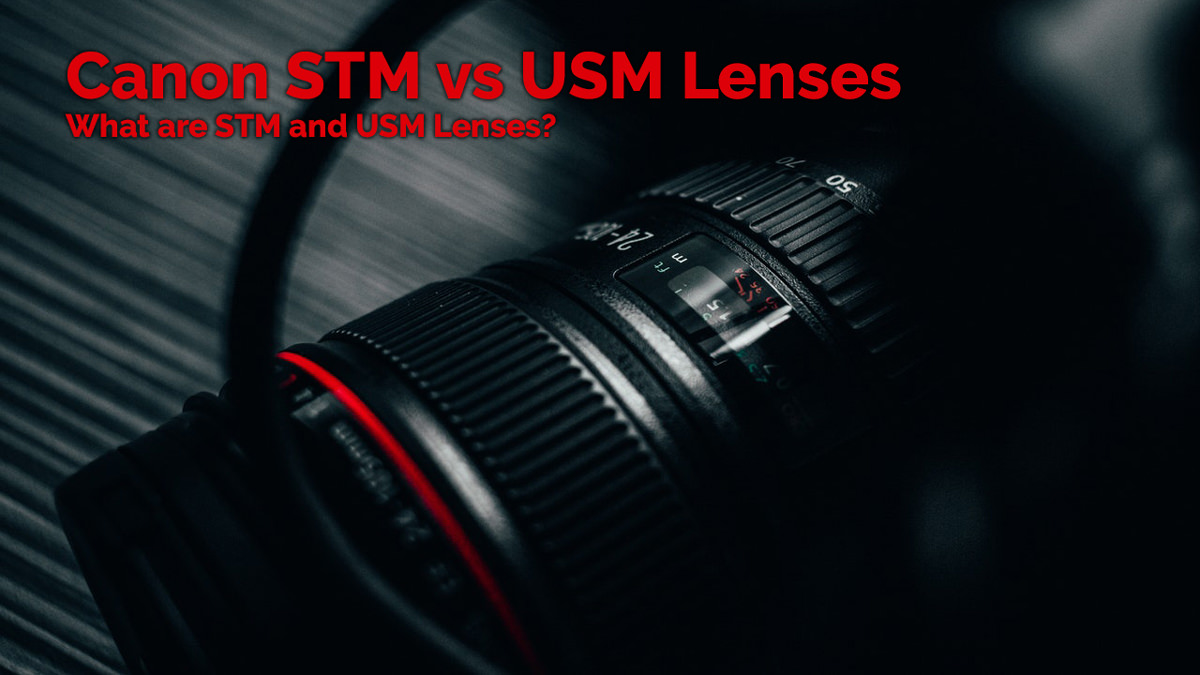Last updated on June 1st, 2022
STM and USM lenses have been part of the Canon lineup and are unique in their own ways. They are both available for photography and videography, it all depends on the result you are looking for and the project you will be working on.
Canon STM (Stepper Motor) lenses came from the knowledge-build with the ring-type USM (Ultrasonic Motor) type lenses. Canon realized the need for a lens for projects with low noise levels and smoother focusing transition. USM lenses have been around for several years and are well known. Canon’s latest invention is part of the USM range, the Nano USM. A lens with almost no noise, fast, and a smooth-focus transition all in one.
Canon Focusing System History
Looking back, Canon brought out their first lens in 1964, the Serenar 50mm F3.5 I — a standard lens for a rangefinder camera.
As years went by, Canon’s rivals started bringing out more innovative ideas. As a result, in 1985, Canon introduced their first SLR (single-lens-reflex) camera with an AF (autofocus) drive motor function built into the body, the T80.
Unfortunately, the T80’s performance failed against its rivals, and production only lasted a year. That didn’t stop the Japanese engineers from trying harder and learning from past mistakes.
In 1987, Canon launched the new EOS 650 (Electro-Optical System) that succeeded and competed with other cameras. Since then, Canon has realized the need for faster focusing speeds.
Canon produced their first ring-type USM lens that was cost-effective. It came out in 1990 and fitted into the EF 300mm F2.8L USM lens.
The question lingered, “is there a call for autofocus lenses?” The answer became clear quickly as more and more lenses came fitted with autofocus motor systems. Much faster-focusing speed, much clearer pictures, with pinpoint accuracy on the focus point, and in some cases even assisted in the elimination of camera shake.
With autofocus, it became possible to photograph fast-moving objects with a sharp focus point and in lower light. Autofocus introduced track-and-shoot, an easier, more accurate setting to follow moving objects and still achieve a sharp focus point.
These new advantages that the autofocus setting brought opened up doors to more creative photography. No more stagnant images; photographers were able to bring in the feeling of movement to their images. The photos seemed as if they could come alive in your eyes.
More About Canon STM and USM Lenses
Both the STM and USM type lenses have their pros and cons. One is the speed at which you can focus. Manual focusing brought with it many out-of-focus images. To focus manually on a still subject can take a few seconds, but imagine trying to focus on a moving subject.
With autofocus mode, the lens and camera sensor search for the best focus point. You have the option to choose a single point of focus or a group of points, and with the motor on the inside of the lens, it moves the focusing glass back and forth continuously until it locks on the point of focus. This function speeds up the focus time and gives you pinpoint sharpness. These lenses became so popular that Canon’s USM lenses were featured in international sporting events as the equipment to have.

Canon Micro and Nano USM Lenses
Canon decided to bring out two other USM-type lenses.
The micro USM lens, designed with the idea of creating a lighter lens. A lens that you can use in fast-moving sports without the use of a monopod or a tripod. The micro USM lens has all the components of the ring-type USM lens, the rotor, and the stator, and also causes the rolling movement that rotates the gears, except they are all together in one motor. The micro USM fits into the lens barrel and is created for a wide range of lenses.
The last type in the USM range and the latest innovation brought out by Canon is the Nano USM lens. The Nano USM lenses offer high-focus speed and smoother focus transitions in a system designed for quieter movement. This lens is excellent for still-life photography, but it is ideal for videography that uses the camera’s microphone.
The Nano USM is extremely small, much like a microchip, but it’s capable of extremely fast drive speed and even faster response time. This is because the vibrations are directly transmitted from the element to the slider, which moves the focusing lenses in a back-and-forth direction — no motor with gears, and quiet, smooth movements.
Another innovation from Canon brought out before the Nano USM is the STM lens range. They realized that the USM motor sound poses a problem in videography. You can hear the gears’ movement through the camera’s microphone (called lens noise), and the focus transition was giving the feeling of a ‘jerking’ movement.
With this knowledge, they started on a new lens type called STM (Stepper Motor). They designed two types, the gear-type STM and the lead-screw-type STM. The gear-type STM posed the same problem as the USM types with the gears; there was considerable lens noise.
The lead screw-type STM lenses have a motor that runs back and forth on a lead pipe that lowers the noise level considerably and smooths out the jerking movement. Although this is ideal for a quieter lens, the disadvantage is that it is slower in focusing than the USM lenses. This lens type was brought out with the beginner videographer in mind. The more advanced artist might find this lens too slow for the projects they work on.
Canon STM vs USM Lenses
When you compare STM vs USM lenses, you’ll notice a faster, more accurate lens that is not as noisy as your normal Drive Motor Lenses. To decide which type of lens will best suit your needs, let’s review both types and what they bring to the table.
What are Canon STM Lenses?
The Canon STM lenses have a smooth rack focus, the motor noise is quiet, and they are more affordable. But they lack focusing time, the manual focus is slightly delayed, and STM lenses have inferior quality compared to professional-grade lenses. Therefore the price is slightly lower. It’s best for beginner photographers and videographers.

What are Canon USM Lenses?
The Canon USM lenses are faster in focus speed, the noise is relatively low in manual-focus mode, and they are the most used lens type in the Canon range.
The downside of these lenses is that they have noticeable lens noise. The rack focus is a lot more abrupt than STM lenses, meaning that there is a jerking movement between the focusing points.
USM lenses are more expensive than STM lenses. The Nano USM cancels out most of the cons in both types, except that the price is considerably higher.
Nano USM lenses are recommended if they are within your budget or you’re a professional photographer.
Conclusion
The autofocus function has brought so many more creative ideas. It opened up doors for better innovations by engineers such as Canons. Autofocus also increased the competition between high-end lens manufacturers. These innovations are beneficial for both amateur and professional artists.
Photographers and videographers have the option to dabble in both with the new releases in equipment coming out year after year. The market has become so flooded with great equipment that we sometimes get lost in all the information.
If you are a beginner in videography or searching for a lens that can be used for manual and autofocus projects, Canon has it. The STM-type lenses are affordable, they are robust, the quality is outstanding, and although the focus speed is slightly slower, it is not noticeable.
You will be able to get noise-free videos with a smooth focus transition using your camera’s microphone. The quality might be slightly inferior to the USM lens quality, but that too is not even noticeable.
When you do end up looking for a higher quality lens with even better functioning capabilities, then the Nano USM lenses will be the one for you. There aren’t that many on the market yet. Currently, there are only four different Nano USM lenses out. The first to come out was the EF18-135mm F3.5-5.6 IS USM, there is also the EF70-300mm F4-5.6 IS II USM, and the RF24-105mm F4 L IS USM, and last is the RF24-240mm F4-6.3 IS USM.
With innovations from various lens manufacturers gathering steam, let’s hope to see more Nano USM lenses at more affordable prices.

